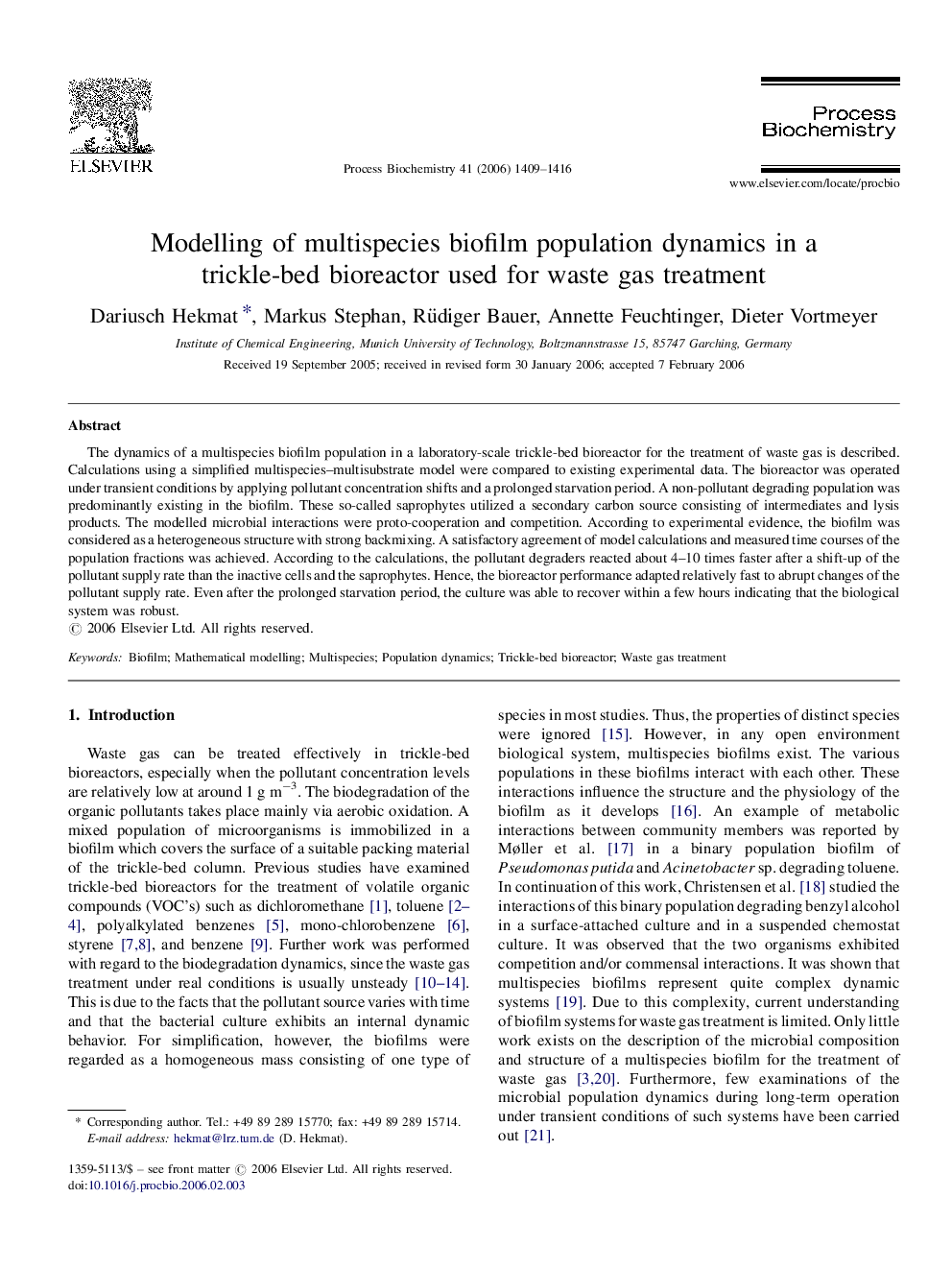| Article ID | Journal | Published Year | Pages | File Type |
|---|---|---|---|---|
| 36354 | Process Biochemistry | 2006 | 8 Pages |
The dynamics of a multispecies biofilm population in a laboratory-scale trickle-bed bioreactor for the treatment of waste gas is described. Calculations using a simplified multispecies–multisubstrate model were compared to existing experimental data. The bioreactor was operated under transient conditions by applying pollutant concentration shifts and a prolonged starvation period. A non-pollutant degrading population was predominantly existing in the biofilm. These so-called saprophytes utilized a secondary carbon source consisting of intermediates and lysis products. The modelled microbial interactions were proto-cooperation and competition. According to experimental evidence, the biofilm was considered as a heterogeneous structure with strong backmixing. A satisfactory agreement of model calculations and measured time courses of the population fractions was achieved. According to the calculations, the pollutant degraders reacted about 4–10 times faster after a shift-up of the pollutant supply rate than the inactive cells and the saprophytes. Hence, the bioreactor performance adapted relatively fast to abrupt changes of the pollutant supply rate. Even after the prolonged starvation period, the culture was able to recover within a few hours indicating that the biological system was robust.
